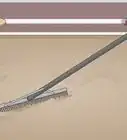This article was co-authored by Monica Morris. Monica Morris is an ACE (American Council on Exercise) Certified Personal Trainer based in the San Francisco Bay Area. With over 15 years of fitness training experience, Monica started her own physical training practice and gained her ACE Certification in 2017. Her workouts emphasize proper warm-ups, cool-downs, and stretching techniques.
There are 18 references cited in this article, which can be found at the bottom of the page.
wikiHow marks an article as reader-approved once it receives enough positive feedback. In this case, several readers have written to tell us that this article was helpful to them, earning it our reader-approved status.
This article has been viewed 387,462 times.
Performing a successful triple jump requires practice and guidance. The first step is learning proper technique. Once you know how to correctly complete all three steps of the triple jump (hop, step, and jump), you'll move closer to mastering it. All track and field events require strong lower body strength, so make sure you train your legs often to improve.
Steps
Warming Up
-
1Begin with stretching exercises. Loosening up your muscles before you jump will prevent injuries or cramping later on. Stretch for around one or two minutes before practicing triple jumps, especially if you haven't practiced for several days. Don't just stretch your legs: stretch your arms, back, shoulders as well.[1]
- Plan on three or four stretches, while holding each between 15-20 seconds.
-
2Practice single leg-hopping. Single leg hops are a good way to strengthen control over your leg muscles. Lift one leg behind your back, heel up, and begin jumping with the other. Make sure to land on the ball of your foot rather than the heel. Continue jumping rhythmically on one foot, then switch to the other after a set time. This is one set.[2]
- Finish two or three sets before you begin the triple jump.
- You can also jump rope to practice your final landing.
Advertisement -
3Try high knees. For good form during your triple jump, you will need flexibility to lift your knees parallel to your hips. To perform high knees, lift one knee as high as it will go, then switch to your other knee.[3] The movement should look like an exaggerated march. Move down a small stretch of track (between 15-20 meters) while you practice high knees to warm up your glutes and hip flexors.[4]
-
4Do jumping drills. Drills incorporate the fundamentals of the triple jump before you start practicing. Practice at least one or two jumping drills to get your body in exercise mode. Choose your daily drills based on your weaknesses.
- Hopping drill: Try hopping up stairs or around orange cones.
- Stepping drill: Practice a series of "hop-steps" with each hop-step progressively longer.
- Jumping drill: Stand with both feet together next to the sand pit and jump in and out of the pit with your feet together.[7]
Hopping, Stepping, and Jumping
-
1Run up to the board and jump. This will begin the first phase: hop. Generally, you will want to use your dominant foot. Get a running start (lasting about 17-18 strides) so you can forcefully jump off the board. Pull your opposite foot up behind you.
- Make sure not to run beyond the board during your hop, as doing so is considered a foul.[8]
- For the hop and skip, you will begin your jump with the same foot.
-
2Keep your arms extended in front of your body. While you are airborne during the hop, skip, and jump, never let your hands drop lower than your chest or higher than your chin. Move both arms forward, as if you are grabbing something in front of you. If your arms are too high, you are more likely to fall out of position when you hit the ground.[9]
- Don't position your arms behind your back. Doing so will slow you down during takeoff and landing.
-
3Hit the ground with your foot flat. During the hop and step, you will land with your dominant foot flat or roll from heel to toe. Do not put too much pressure on either your heel or toes. Once you've touched the ground, roll forward onto the balls of your feet and prepare for the step.
-
4Start your step with the same foot. Again with your dominant foot, jump with your back leg extended behind the body. You will keep your your back leg's heel up to prepare for the landing. Land with your back leg forward to complete the step and prepare for the final phase: jump.[10]
-
5Begin the final phase (jumping) with your opposite foot. During the jump, you will leap with your opposite (formerly back foot). By this point, you will be close to the sandpit. Bring both feet together with your knees parallel to your chest as you jump into the pit.
- Unlike the first two steps, land the jump with your heels first.[13]
Improving Strength and Endurance
-
1Train at least three or four days a week. The key to building strong leg muscles is frequent training sessions. If you're on a track and field team, you probably have opportunities to practice every week. If not, however, work out independently several times a week.[14]
- Rotate the muscle groups you train. Build workout regimes over specific groups like your legs, chest, biceps, or stomach.
-
2Try interval training. Interval training improves both leg speed and endurance simultaneously. First, warm up by running at a moderate pace for a few minutes. Then, run at your maximum speed for one or two minutes. This is your first interval. Repeat this with three or four more intervals, each one interspersed with running for several minutes at a moderate pace.
- Pushing yourself too hard is common during interval training. If you feel weak or excessively sore for several days after workouts, take a break from interval training for a week.[15]
- After every interval training, cool down by walking briskly for about five minutes. This will help slow down your heart rate. Recovery is just as vital as the actual workout.[16]
-
3Start weight training. Triple jumps require tons of bodily control, and weight training is a great way to gain stamina. Plan a weight training exercise day one or two times a week. Start with light weights, like dumbbells, and move onto larger weights as you get stronger. While working with weights, you can do squats, push-ups, planks, or sit-ups.[17]
- Overexerting yourself with weights can result in knee or back injury. Work your way up to heavier weights gradually.
- Don't just put pressure on your lower body. Upper body strength is also important for ideal triple jumping form.
-
4Cross-train. Training for triple jumps involves more than just running and jumping. Your body will be strongest if all of your muscles are in shape. Spend one or two days a week working out other muscles and giving your legs a rest.
- Swimming is popular among triple jumpers because it relieves pressure on the legs while still getting cardio.[18]
-
5Add a day of light exercise into your weekly regimen. Rest days are important for muscle recovery.[19] Your muscles will not have time to repair themselves if they are overworked every day. Put one or two days of light exercise to your weekly schedule. On rest days, you could walk, do yoga, or go on an easy hike.[20]
Community Q&A
-
QuestionHow do I improve technique and distance in the jump?
 Community AnswerCounting your steps from the board helps you find the most comfortable footing and running pattern for distance. Bicycle crunches can help you to learn to bring your leg up while jumping.
Community AnswerCounting your steps from the board helps you find the most comfortable footing and running pattern for distance. Bicycle crunches can help you to learn to bring your leg up while jumping. -
QuestionHow do I do a triple jump and hit the mark?
 Community AnswerDo a runback from the board you're jumping from of approximately 6-8 steps, get the mark, and do a run through as if to actually jump. Adjust until on mark.
Community AnswerDo a runback from the board you're jumping from of approximately 6-8 steps, get the mark, and do a run through as if to actually jump. Adjust until on mark. -
QuestionWhat are the skills needed for triple jump?
 Community AnswerTriple jump athletes excel at different skills. The approach and hop are fairly simple to learn. Most beginners struggle to get a good step phase. Factors that affect how well an athlete performs the different phases of the triple jump include body structure, strength, natural speed, level of experience and the availability of a knowledgeable coach.
Community AnswerTriple jump athletes excel at different skills. The approach and hop are fairly simple to learn. Most beginners struggle to get a good step phase. Factors that affect how well an athlete performs the different phases of the triple jump include body structure, strength, natural speed, level of experience and the availability of a knowledgeable coach.
References
- ↑ http://www.webmd.com/fitness-exercise/features/how-to-stretch#1
- ↑ https://www.youtube.com/watch?v=bWiqZcOHNqU
- ↑ Alphonso White. Certified Personal Trainer, CompleteBody NYC. Expert Interview. 24 February 2021.
- ↑ http://www.stack.com/a/high-knee-drill
- ↑ Alphonso White. Certified Personal Trainer, CompleteBody NYC. Expert Interview. 24 February 2021.
- ↑ Alphonso White. Certified Personal Trainer, CompleteBody NYC. Expert Interview. 24 February 2021.
- ↑ https://www.brianmac.co.uk/triplejump/drills.htm
- ↑ https://www.iaaf.org/disciplines/jumps/triple-jump
- ↑ http://www.familyresource.com/health/exercise/the-fundamental-aspect-of-the-triple-jump-for-dummies
- ↑ https://www.brianmac.co.uk/triplejump/index.htm
- ↑ https://www.youtube.com/watch?v=n6_Q563nGh0
- ↑ https://www.thoughtco.com/will-clayes-triple-jump-tips-3259315
- ↑ http://digitaltrackandfield.com/track-and-field-jumping-progression-triple-jump/
- ↑ http://www.menshealth.co.uk/building-muscle/get-big/how-often-should-you-train-each-muscle-group
- ↑ http://www.shape.com/fitness/tips/warning-signs-youre-pushing-yourself-too-hard-gym
- ↑ http://www.mensfitness.com/training/build-muscle/5-ways-to-cool-down-after-a-workout
- ↑ https://www.exercise.com/workout-plans/triple-jump-workout-plan
- ↑ https://greatist.com/fitness/live-pro-olympic-triple-jumper-samyr-laine
- ↑ Monica Morris. ACE Certified Personal Trainer. Expert Interview. 18 November 2019.
- ↑ https://www.bodybuilding.com/fun/behar2.htm
About This Article
To triple jump, get a running start and launch off the board with your dominant foot, pulling your opposite foot up behind you, and land with your feet flat to complete the "hop" phase. Next, roll forward onto the balls of your feet to go into the "step" phase, leading with your dominant foot and keeping your back leg extended behind you. Then, land with your back leg forward and go into the final "jump" phase by leaping into the sand pit with your opposite leg. Don't forget to bring both feet together and land with your heels first! For tips on training for the triple jump, read on!
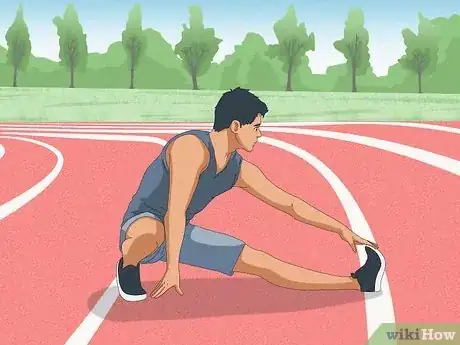
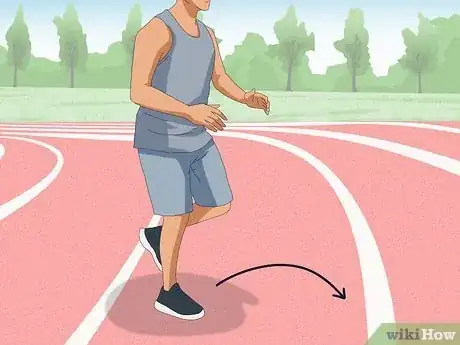
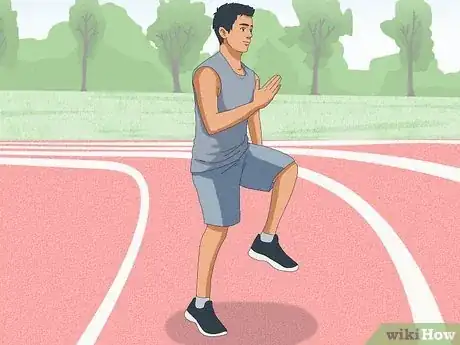

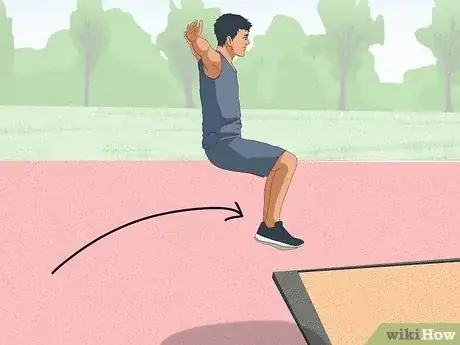
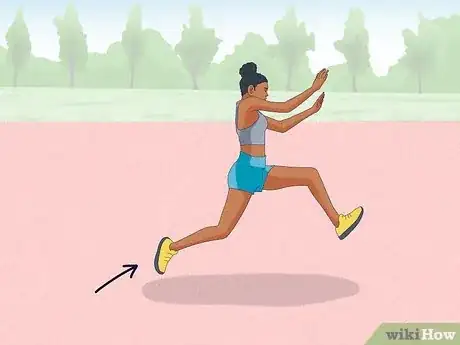
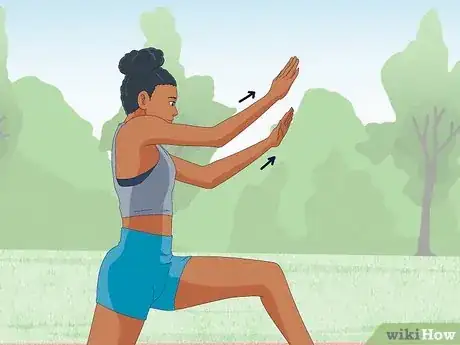

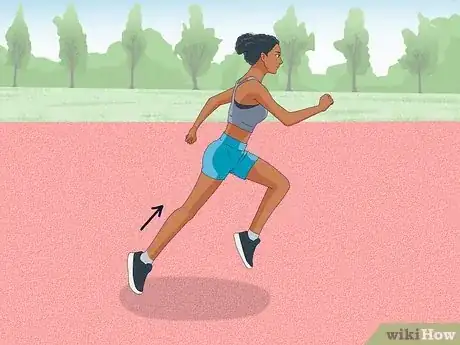

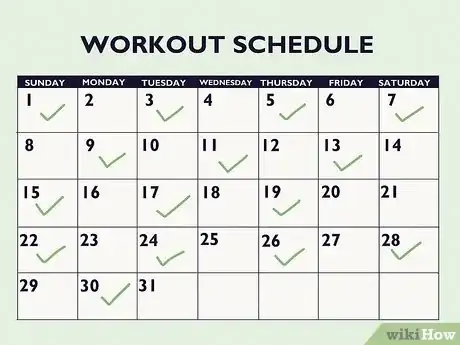
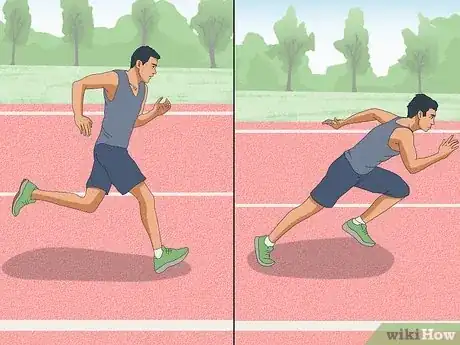
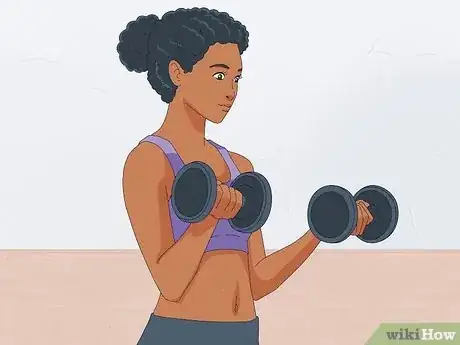



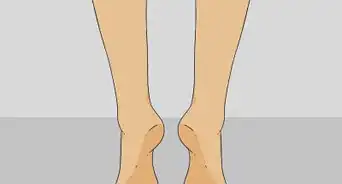
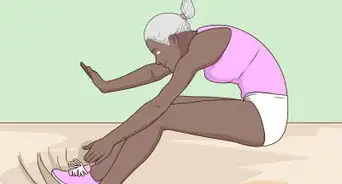
-Step-15-Version-2.webp)


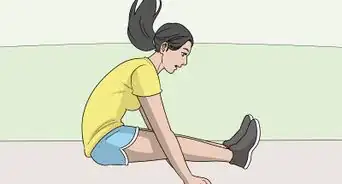
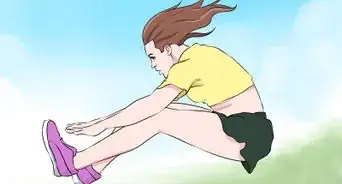
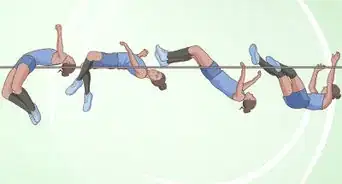
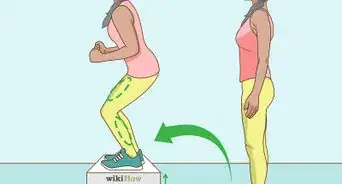










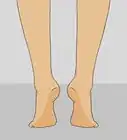
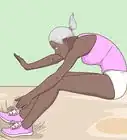
-Step-15-Version-2.webp)
